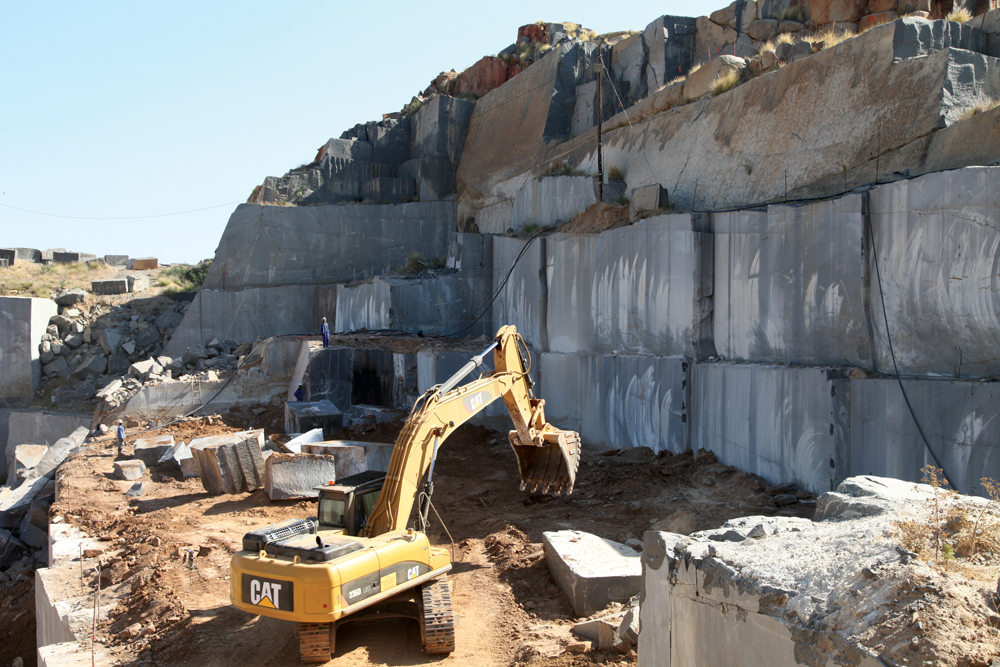Diving right into of Granite Quarries in South Africa
Diving right into of Granite Quarries in South Africa
Blog Article
Uncovering the Rich History and Lasting Practices of Granite Quarrying
As we base on the precipice of discovering the complex tapestry of granite quarrying, a journey with time reveals not simply the physical act of extracting rock however likewise the cultural and historical importance woven into the really textile of this method. From the ancient origins that laid the structure for modern-day quarrying strategies to the lasting practices that are forming the future of this industry, each sculpt mark on granite surfaces narrates waiting to be discovered (granite quarries in south africa). The heritage of granite quarrying extends far beyond plain removal; it is a testimony to human resourcefulness, durability, and the enduring attraction of this magnificent stone
Ancient Beginnings of Granite Quarrying
Going back to ancient civilizations, the technique of quarrying granite has actually been an indispensable component of human history and architectural advancement. The earliest proof of granite quarrying go back to ancient Egypt, where large pyramids and detailed sculptures were crafted from this sturdy stone. The Egyptians used primitive tools to remove granite blocks from quarries, showcasing the significance of this product in their monumental buildings.
Moving on in background, the Greeks additionally made considerable contributions to the quarrying of granite. The Greeks used granite in different building marvels, such as holy places and statues, demonstrating their ability in shaping and sculpting this sturdy stone. The Romans further improved the strategies of quarrying granite, using advanced tools like blades and hammers to extract and shape granite for their famous structures.
With the centuries, the method of quarrying granite has actually developed, with modern innovations boosting effectiveness while keeping the classic allure of this natural rock - granite quarries in south africa. From old people to contemporary contractors, the tradition of granite quarrying remains to form our world
Advancement of Quarrying Strategies
The development of quarrying techniques has been noted by a continual progression in the direction of greater effectiveness and accuracy in removing granite. From the primary techniques used by our ancestors to the innovative technologies used in modern quarrying operations, the sector has actually gone through significant innovations. Early quarrying methods included hand-operated labor with basic devices such as chisels, hammers, and wedges to remove granite blocks from the planet. As worlds advanced, methods like fire-setting and primitive explosives were presented to help with the extraction procedure.
In even more recent times, the development of machinery revolutionized the quarrying industry, allowing much faster removal prices and increased productivity. Technologies such as diamond cord saws, high-pressure water jets, and pneumatic drills have become basic in contemporary quarries, enabling specific cutting and decreased waste. Moreover, advancements in computer-controlled tools and 3D modeling have optimized quarrying operations, bring about minimal ecological impact and improved sustainability practices. As the demand for granite proceeds to rise, the evolution of quarrying methods stays indispensable to conference market needs efficiently and sustainably.
Cultural Value of Granite
Granite holds an extensive cultural value throughout various people due to click over here its enduring existence in building work of arts and prized monuments. From the marvelous pyramids of Egypt to the intricate carvings of the Angkor Wat holy place in Cambodia, granite has actually been a material of selection for sharing magnificence and long life in cultural heritage. In old Rome, granite columns embellished temples and public structures, symbolizing stamina and durability. The social value of granite extends beyond its physical characteristics; it personifies durability, security, and eternity, making it a sign of withstanding legacies and traditions.

Sustainable Practices in Quarrying
In the middle of the rich background of granite quarrying and its social relevance lies an expanding focus on sustainable practices within the sector. As environmental recognition and worries concerning source exhaustion have actually heightened worldwide, the quarrying field has actually progressively embraced lasting approaches to reduce its influence on the environment and surrounding neighborhoods.

In addition, improvement and rehabilitation of quarry sites post-extraction are indispensable to lasting practices. By restoring quarried areas to a natural or helpful state, such as producing wild animals environments or recreational spaces, quarriers can offset the environmental footprint of their operations and add favorably to the regional environment.
Legacy of Granite Quarrying
With a historical backdrop soaked in workmanship and commercial progress, what sustaining impact has granite quarrying left on the landscape of modern-day culture? The legacy of granite quarrying transcends mere removal methods; it has shaped building wonders, urban landscapes, and cultural heritage worldwide. The sturdy nature of granite has additional resources actually made it a preferred choice for monuments, buildings, and infrastructure, standing as a testament to the ability and artistry of quarry employees across generations.
Additionally, the economic footprint of granite quarrying can not be overlooked. The industry remains to provide employment possibility and drive neighborhood economic climates in areas where granite removal prevails. It has additionally stimulated technical improvements in quarrying techniques and equipment, bring about much more effective and sustainable practices.
In regards to sustainability, the tradition of granite quarrying consists of initiatives to mitigate ecological impacts via recovery projects and responsible resource monitoring. By stabilizing economic interests with ecological stewardship, the industry makes every effort to make certain that future generations can continue to profit from this long-lasting all-natural resource.
Final Thought

Report this page